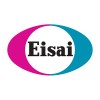An Open Label Dose Escalation Study Of E7080
Solid Tumor or Lymphoma

About this trial
This is an interventional treatment trial for Solid Tumor or Lymphoma focused on measuring Resistant and refractory solid tumors, lymphomas, hodgkins disease, non-hodgkins lymphoma, neoplasms
Eligibility Criteria
INCLUSION CRITERIA: Patients must meet all of the inclusion criteria outlined below in order to be eligible to participate in the study: Patients with histologically and/or cytologically confirmed solid tumor or lymphoma who are resistant/refractory to approved therapies or for whom no appropriate therapies are available. All previous treatment (including surgery and radiotherapy) must have been completed at least four weeks prior to study entry and any acute toxicities must have resolved. Aged greater than or equal to 18 years. Karnofsky performance status greater than or equal 70%. Written informed consent to participate in the study. EXCLUSION CRITERIA: Patients with the following characteristics will not be eligible for the study: Brain tumors or brain or leptomeningeal metastases. Any of the following laboratory parameters: hemoglobin less than 9 g/dl (5.6 mmol/L) neutrophils less than 1.5 x 10^9/L platelets less than 100 x 10^9/L serum bilirubin greater than 25 micro-mol/l (1.5 mg/dl) other liver parameters greater than 3 x the upper limit of normal (ULN) serum creatinine greater than 1.5 x ULN or creatinine clearance less than 60 ml/minute Uncontrolled infections. Clinically significant cardiac impairment or unstable ischemic heart disease including a myocardial infarction within six months of study start. Any treatment with investigational drugs within 30 days before the start of the study. Pregnancy or lactation (all women of childbearing potential must have a negative pregnancy test before inclusion in the study; post-menopausal women must be amenorrheic for at least 12 months). Female patients of childbearing potential must use adequate contraceptive protection, defined as two forms of contraception, one of which must be a barrier method. Fertile males not willing to use contraception or whose female partners are not using adequate contraceptive protection. History of alcoholism, drug addiction, or any psychiatric or psychological condition which, in the opinion of the investigator, would impair study compliance. Legal incapacity. Centrally located or squamous cell carcinoma of the lung. Proteinuria greater than 1+ on bedside testing. History of gastrointestinal malabsorption. Surgery involving gastro- and/or intestinal anastomosis within four weeks of study start. Patients with bleeding or thrombotic disorders. Patients using therapeutic dosages of anticoagulants. Poorly controlled hypertension (defined as a change in hypertensive therapy within three months of study start) or patients diagnosed with hypertension (defined as a repeat blood pressure measurement of 160/90 mmHg or higher) at screening.
Sites / Locations
- Netherlands Cancer Institute- Antoni Van Leeuwenhoek Hospital
- Gartnavel General Hospital
Arms of the Study
Arm 1
Experimental
1
Outcomes
Primary Outcome Measures
Secondary Outcome Measures
Full Information
1. Study Identification
2. Study Status
3. Sponsor/Collaborators
4. Oversight
5. Study Description
6. Conditions and Keywords
7. Study Design
8. Arms, Groups, and Interventions
10. Eligibility
12. IPD Sharing Statement
Learn more about this trial
